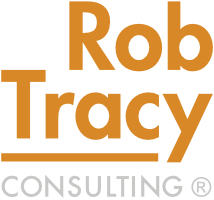By Rodd Joos
What is your reaction when your customer requests a quote for prototype parts?
Traditionally, manufacturers consider making prototypes a cost of doing business. Customers expect you to support prototype quantities, but let’s face it, they are a nuisance. Quoting the work takes as long as making the parts, and the order will not be worth much. However, you need to provide good service to your customers, and you hope that the prototype project will turn into a large volume order for you in the future.
Some manufacturers have focused on prototypes, though, and have made a profitable business from it. Those manufacturers have set up their entire business, from marketing to sales to operations to shipping to customer service, around prototypes.
Can a traditional manufacturer get into the prototyping business? Absolutely, but it requires a shift in thinking and approach. Pricing is one key element that must have a different, more courageous approach.
Customers tend to be in a hurry for their prototypes. A product developer is always under pressure to quickly release a new product to the market to generate more sales. New products, even enhancements to existing products, give the sales and marketing teams a reason to have a conversation with their customers about their products, brand, and company. Often customers looking for prototypes are more concerned about lead time than they are about price. Thus prototype parts should be priced based on value to the customer rather than your cost plus a gross margin markup.
To understand how to approach value pricing, think of it from the perspective of the customer. The customer’s budget and buying decision for prototype parts are different from the budget and buying decisions for production parts. The funds will come from an R&D department (SG&A) rather than a COGS account. Lead time is of great value to product developers, and they are willing to pay for speed – not just when they are desperate but also when they recognize that the longer it takes to get a product to market, the less impact the product launch will have on their bottom line.
Customers will want a fair price, but a fair price does not necessarily synonymous with a low price. Charging for speed and responsiveness can be fair and acceptable to customers. Take overnight shipping as an example; freight carriers routinely charge 200% – 400% more for expedited shipping. In prototyping, the expedite multiples can be even more extreme. For example, in CNC machining, I have seen hundreds of customers routinely pay $500-$600 for a single part that would typically cost $25-$30 each at production volumes. Not only were they willing to buy at those prices, but many of those customers were delighted by the service and felt like they are getting more than their money’s worth.
If you have been selling prototype parts too low and would like to turn that cost center into a profit center, you may be asked to justify the high price, especially from existing customers. This may seem like an obstacle, but in reality, it offers an opportunity to speak to customers about the value your quick-turn prototyping service brings and that it runs through a different process than regular production, which has a different cost structure.
Understanding the cost structure in prototyping is another aspect of prototype manufacturing that requires a different approach. That is a topic for another day.
About the author: Rodd Joos is a Twin Cities, MN based manufacturing professional with expertise in prototype manufacturing. He consults with industry professionals on the topics of prototyping and change management. Rodd can be contacted at rodd.joos@prototypeinsights.com.
